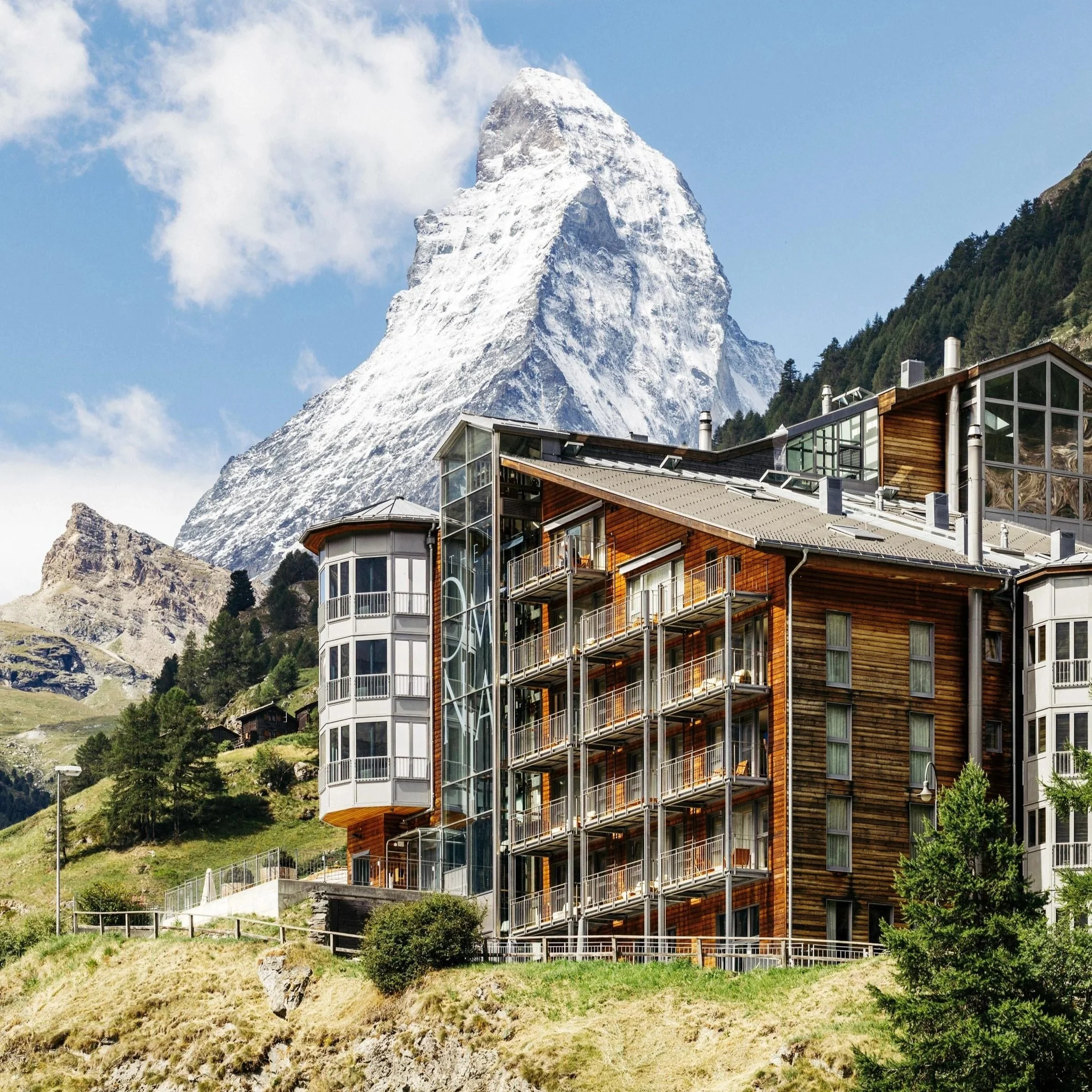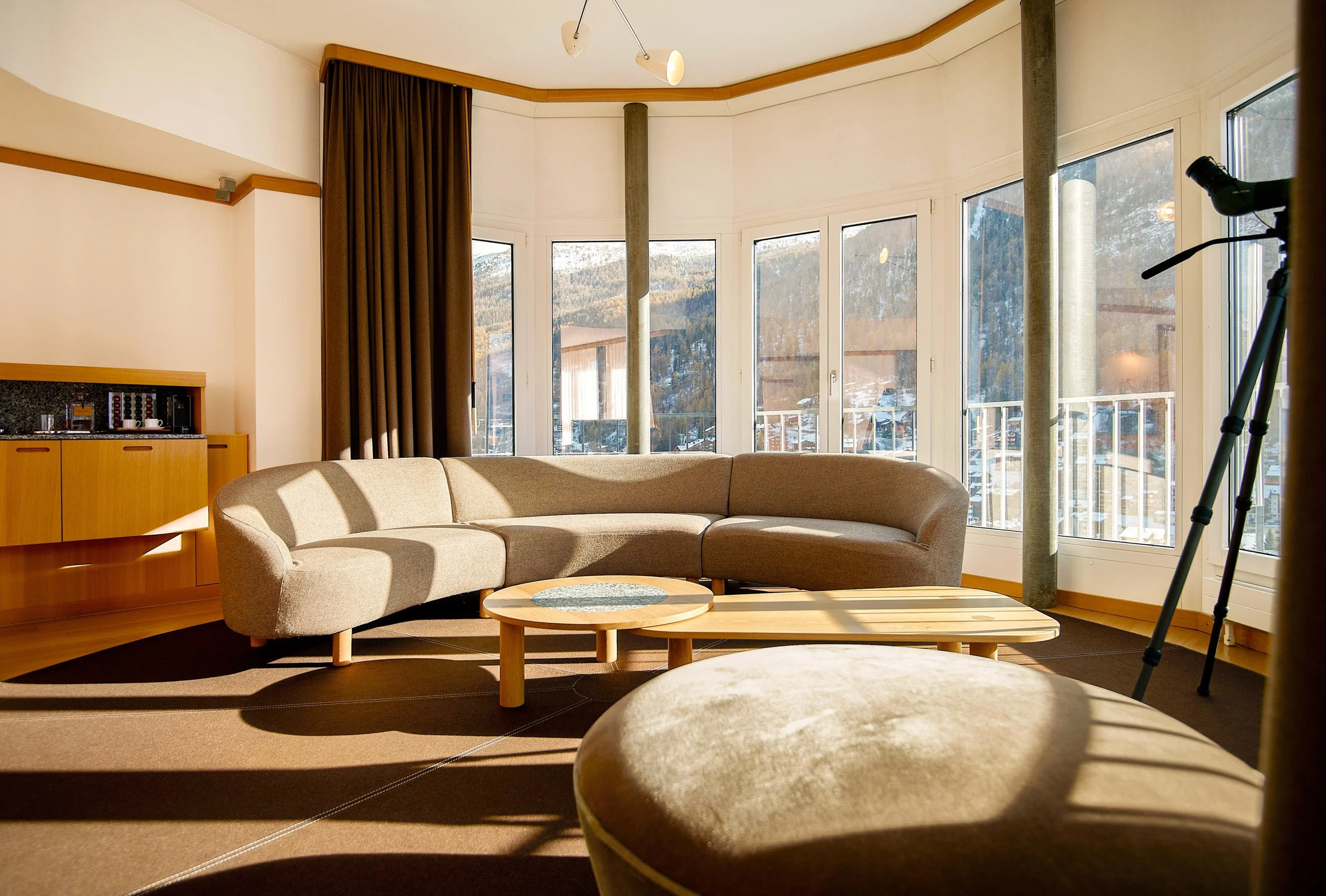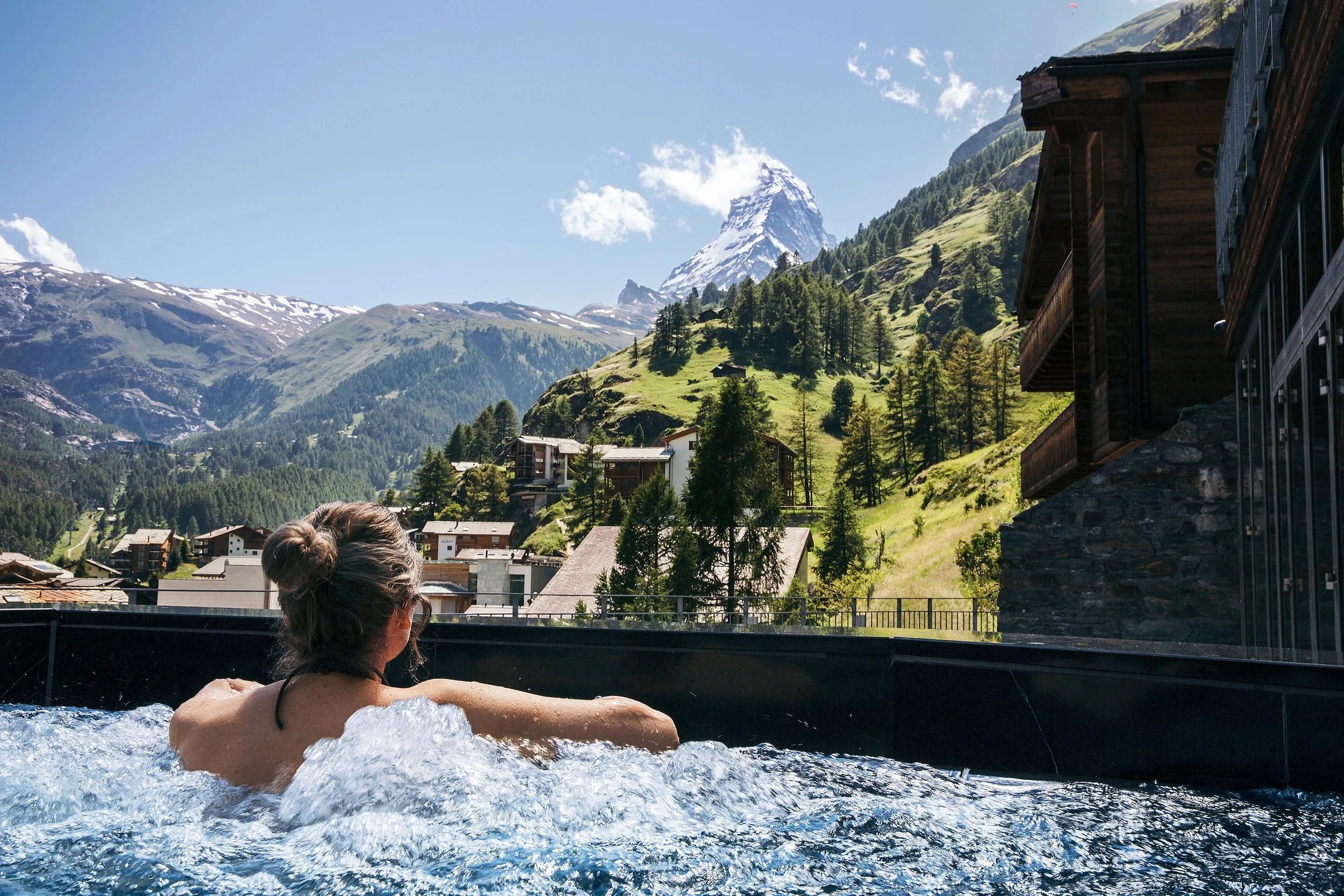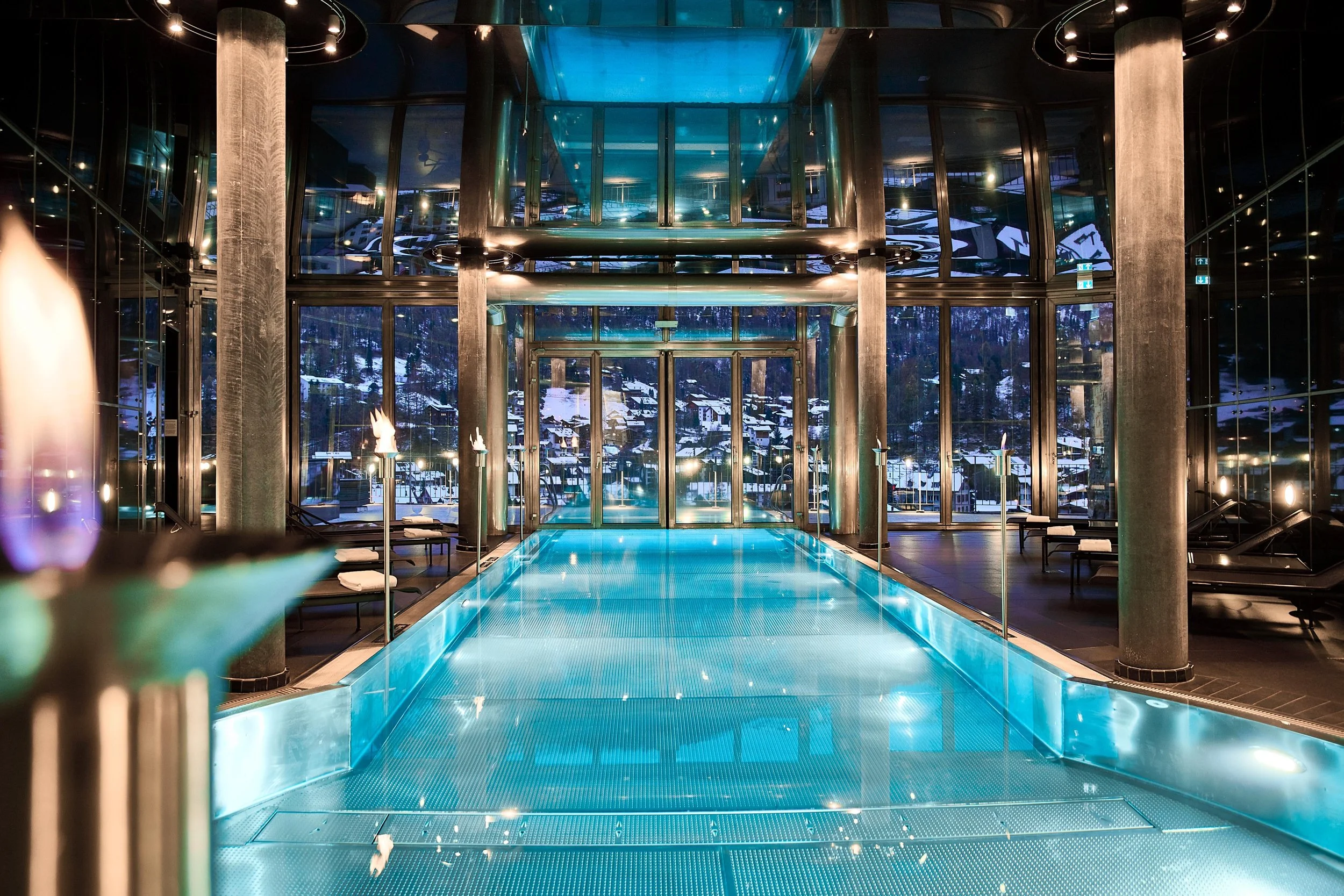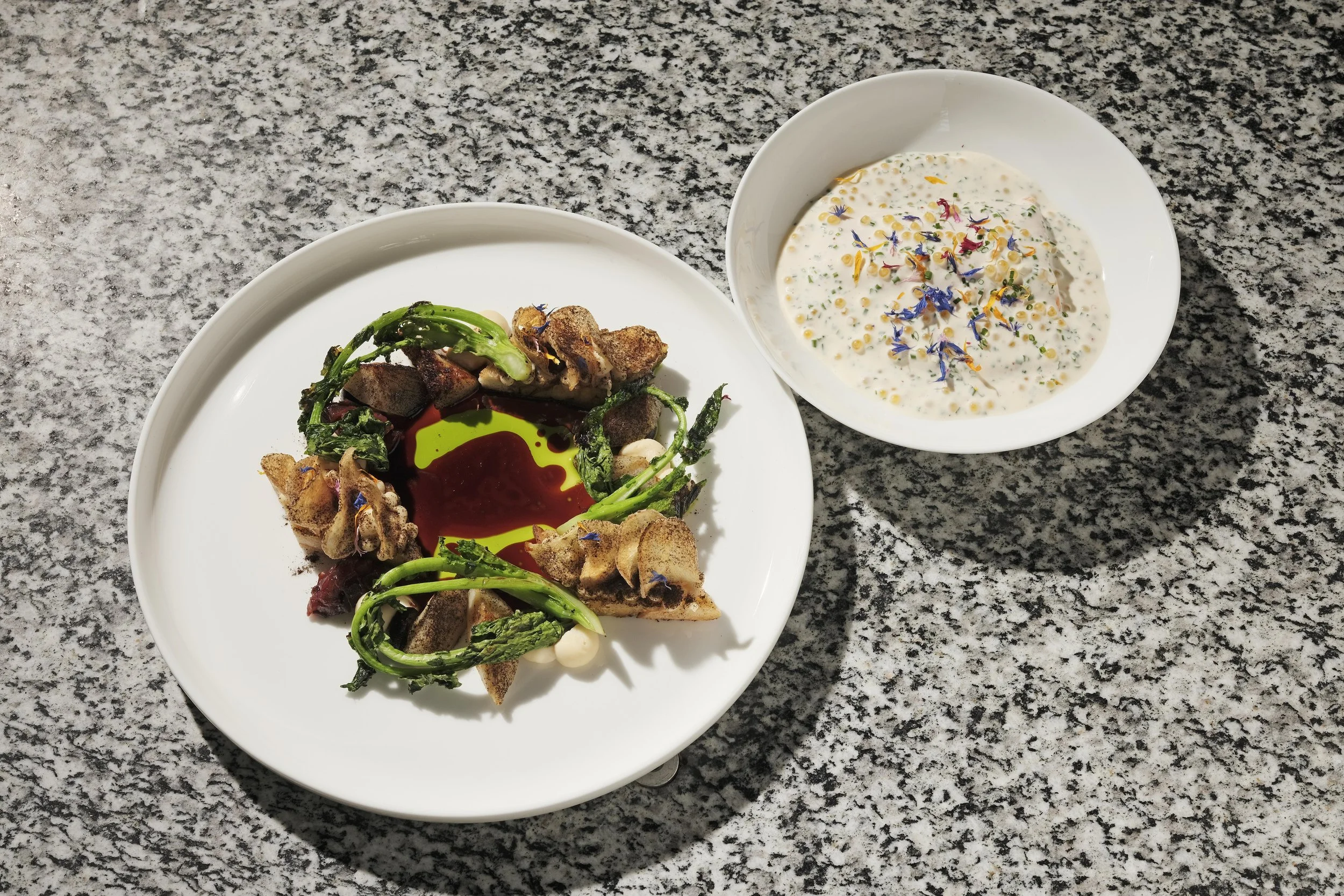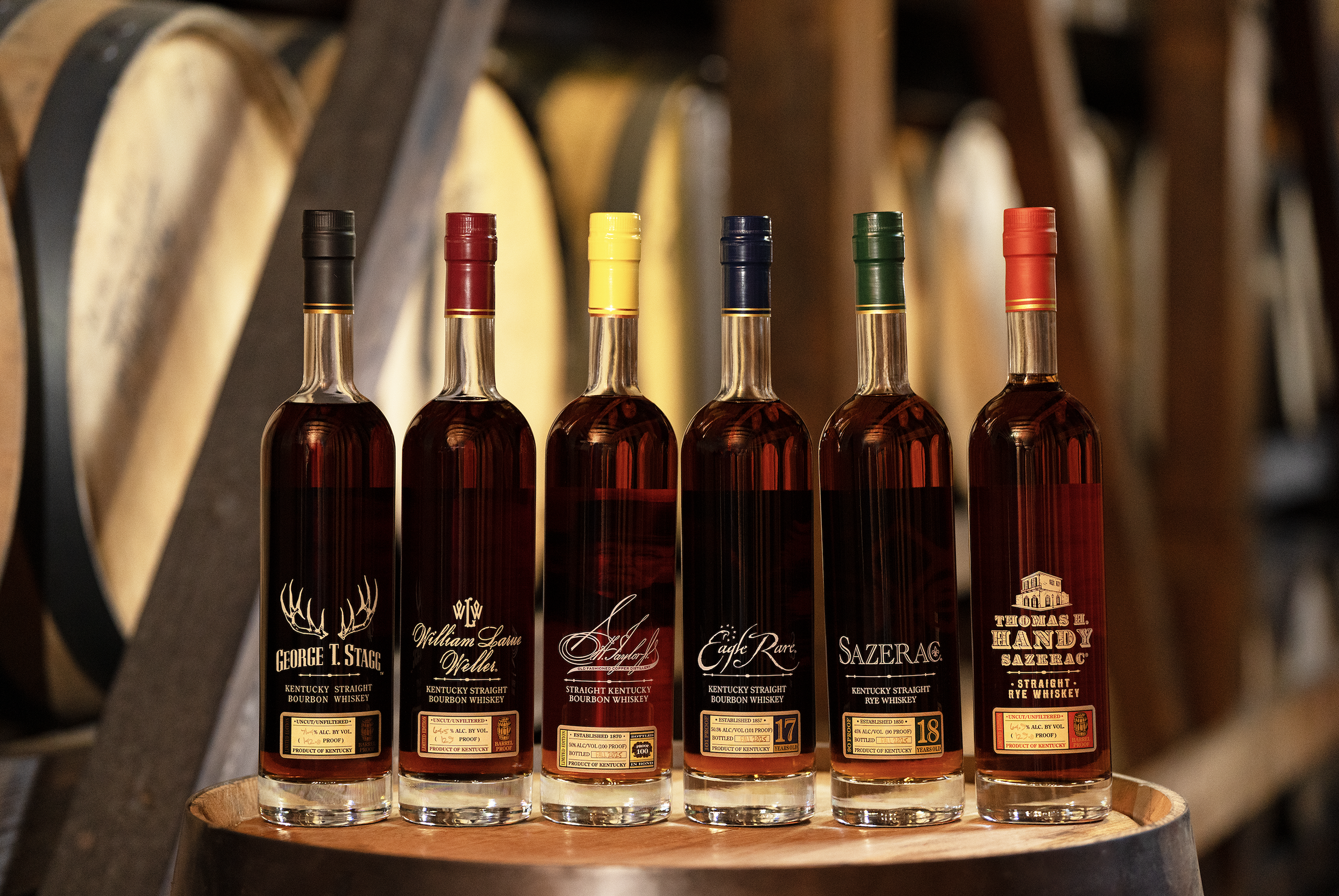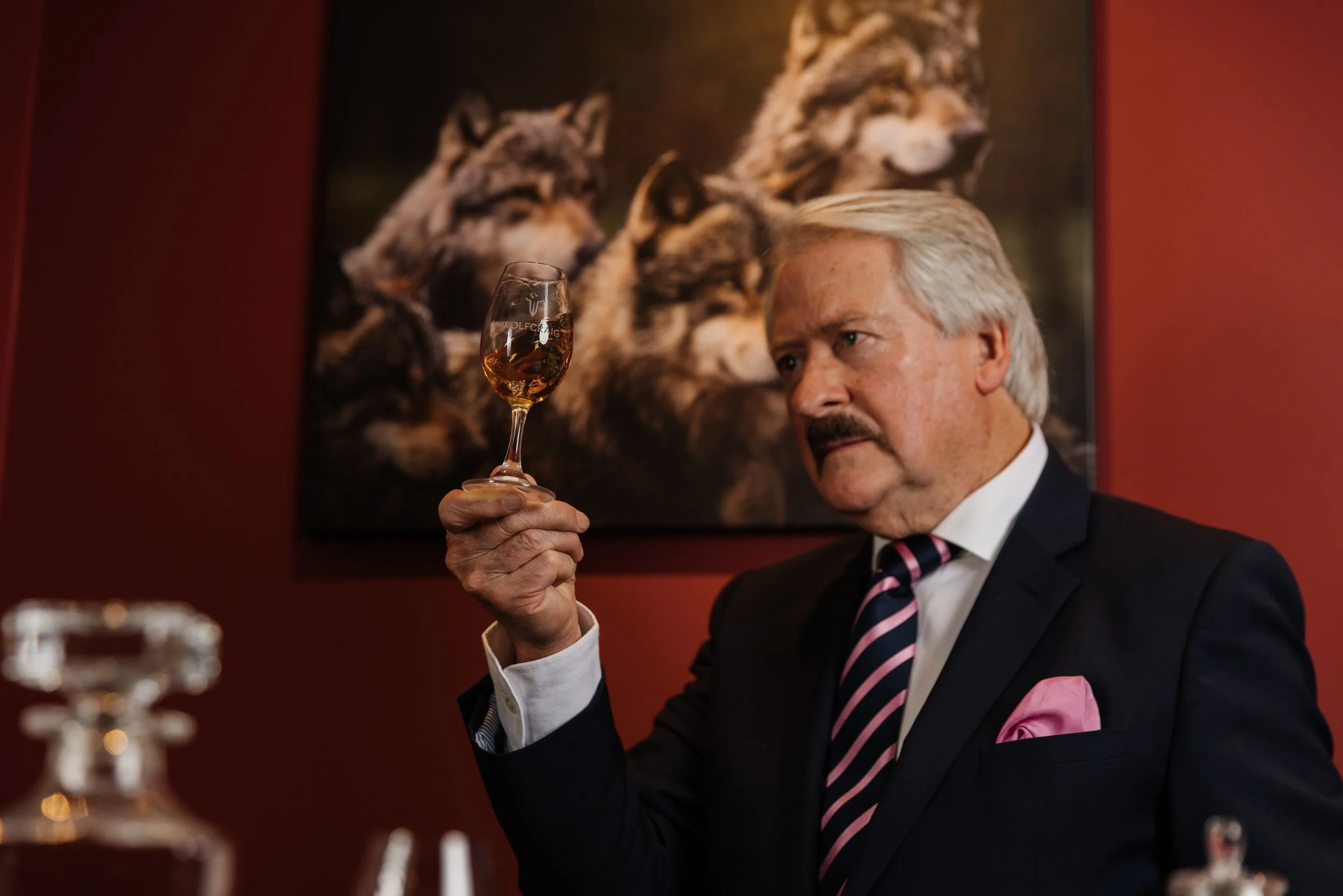Bond, bourbon and the mighty Matterhorn
‘We’ve been expecting you, Mr Thomson’: indulge 007 dreams at the Omnia in Zermatt
A James Bond lair chiselled into the mountains at Zermatt is a luxurious winter retreat, but the Omnia is great in summer too, discovers Gordon Thomson
The sommelier at the Omnia hotel is a confident, charming fellow. And witty too. When he tells me that the Swiss only export two per cent of the wine made in the country – a generous glass of which he’s currently pouring for me – I ask him why that is.
‘We don’t like to share,’ he replies, with a wry smile.
But share he does, and generously so too – a minerally glass of Petite Arvine from the Valais, the sort of clean, Alpine white that seems to have been wrung from the mountain itself. I feel lucky to taste something that good and that rare.
Many more of those secret Swiss wines follow, each one carefully paired with a dish from the Omnia’s five-course tasting menu – an elegant, quietly ambitious affair devised by chef André Kneubühler. The dining room itself is Alpine-chic, all brushed oak, soft steel, softer rugs and a capacious fire that flickers beneath walls of blond timber and stone.
In truth, the real reason we outsiders get so little chance to sample Switzerland’s best wines is simple scarcity. The vineyards cling to steep slopes, mostly in the Valais region, and what little is produced is swiftly snapped up by the locals. I suppose the bankers are thirsty folk. It doesn’t leave much for mere mortals.
So I consider myself blessed. And doubly so when I discover one of the finest whisky collections I’ve ever stumbled across, housed not in a Scottish bothy or a gentleman’s club, but in the elegant library of this modern Alpine lodge.
Alpine chic in the restaurant
The room is a sanctuary of sorts – shelves stacked with weighty art and design tomes, everything from Le Corbusier to Frank Lloyd Wright, and beneath them, hundreds of bottles of whisky arranged by country behind glass. The books and the drams make perfect companions.
Over two lazy days at The Omnia, I dip into that collection – a 25-year-old Glenfarclas here, a honeyed Nikka there – always with the quiet crackle of the fire nearby and the soft hum of the Matterhorn lurking majestically outside the window.
Whether you’re flushed from a day on the slopes or, in my case, pleasantly weary after hours spent tracing forest paths that ribbon the lower slopes of the mountain, this whisky library calls you home like a beacon.
Even the rooms nod to The Omnia’s whisky-and-wood aesthetic. In ours, a crystal decanter of the hotel’s own bourbon sits beside a stack of design magazines. I sip it on the balcony at dusk – shortbread-scented, golden – while the Matterhorn stares back at me, indifferent, immovable, magnificent.
The Omnia lobby
I love the hotel. It’s hard not to.
Carved into Zermatt’s cliff like a Bond lair with better bathrobes, the Omnia isn’t so much built in the mountain as part of it — a striking piece of modernism by New York architect Ali Tayar. Guests arrive through a candlelit tunnel and a private glass lift that glides up through the rock to the lobby, where light floods the timber interior. Inside, it’s all soaring spaces, Esher-like sculptural staircases that twist back and forth as they rise, and an effortless blend of American lodge and Swiss precision.
All that’s missing is the villain with a Persian cat.
Elegant and understated luxury is the house style in rooms and suites
With just thirty rooms – eighteen rooms and twelve suites – it’s intimate but never precious. Some have fireplaces; others, saunas or vast bathtubs hewn from stone.
And then there’s the spa. The Omnia’s pool is one of those rare feats of design that seems to erase the boundary between indoors and out. You swim through a glass opening from the warmth of the interior to the cool mountain air, steam rising as you gaze across the rooftops of Zermatt and the serrated silhouette of the Big M. There’s a Finnish sauna, a flower-scented steam grotto, a hot whirlpool perched at the cliff’s edge – the sort of place where you lose all track of time and temperature alike.
Pool with a view…
… both outside and in
Zermatt itself sits cradled at the end of a deep alpine valley, just shy of the Italian border — a town both glamorous (Richard Burton and Elizabeth Taylor had a home here) and peculiar. It began as a remote farming village until 1865, when Edward Whymper’s daring ascent of the Matterhorn turned it into the world’s mountaineering capital overnight. Today it’s car-free, all polished chalets, electric taxis and fur-trimmed skiwear, and eye-wateringly expensive restaurants, but there’s still something authentic beneath the gloss — the smell of pine, the clang of cowbells, the hum of glacier-fed rivers.
And then there’s the arrival. That final ascent into Zermatt by train is one of the great European journeys. From the valley town of Visp, the cogwheel climbs steadily, the peaks closing in, the river shimmering below, the Big M appearing and vanishing like a mirage.
Chef André Kneubühler oversees the first class kitchen
The Gornergrat Railway, built in 1898, takes it even further — Europe’s highest open-air railway, ascending to over 3,000 metres. Roger Taylor from Queen is said to adore it. But don’t let that put you off. It’s not cheap (about 66 Swiss Francs each way), but the journey up and the views are worth every franc: glaciers sprawling like frozen seas, wildflower meadows clinging to impossible slopes.
Back down in the valley, Zermatt’s English churchyard tells a different kind of mountain story. Here lie the climbers who never made it home – names carved in cold stone: Lord Francis Douglas, Charles Hudson, and Douglas Hadow, all lost on that first fateful Matterhorn ascent; others too, less known but equally brave, their epitaphs quietly stoic in the thin air. I linger among them, reading the inscriptions, wondering what compelled them to risk so much for a summit, and whether the view – that impossible view –was worth the price.
A balcony view across Zermatt with the English church in the foreground
At the summit of the Gornergrat, it’s winter again; snow thick and blinding in the May sun. There are too many people with selfie sticks, of course, but I’ve come to walk down, not linger. Over four glorious hours, I trace trails through pine and heather, past mirror lakes and plunging escarpments that bring those graveyard names vividly to mind. The hike to Riffelesee and Riffelberg from Gornergrat is the trail I did, and I’d highly recommend it.
We’re only a few miles from Italy here, but it feels a world away – the air sharper, the colours cleaner, the mountains vast and sentient. Somewhere, faintly, I think Julie Andrews would approve.
Climb every mountain? Perhaps not. After all, this is modern-day Switzerland, not war-torn Austria. But The Omnia – and this little town of granite and glory – make you believe, just for a moment, that you could.
Double rooms from around £534 per night, The Omnia

